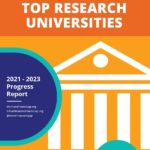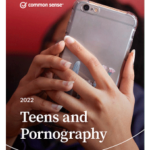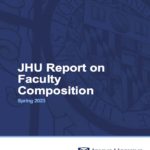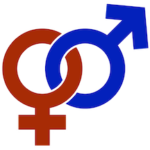 All Entries in the "Research/Study" Category
All Entries in the "Research/Study" Category

A Snapshot of the School Enrollment of Girls and Women in the United States
In 2021, women made up a larger percentage of college and graduate students than was the case at all other lower grades of education. Women were 48.4 percent of all high school students but 55.4 percent of all undergraduate college students and 59.5 percent of all students in graduate schools

Study Finds Widespread Sexual Harassment in Academic Medicine
A new study led by Reshma Jagsi, chair of the department of radiation oncology at the Emory University School of Medicine in Atlanta, finds that women are disproportionately affected by workplace mistreatment in academic medicine, and this mistreatment negatively impacts their mental health.

Stanford University Study Finds a Gender Gap in Academic Authors Who Get to Share in Patents
New research undertaken by an interdisciplinary team of Stanford Law and Stanford Medicine students, looks at the overlap between biomedical research paper authors and those authors who go on to be named inventors of their research on patents. Among the findings is a gender discrepancy between male and female authors, with male authors receiving patents more frequently.

Women Making Progress as College and University Presidents: But Still a Long Way to Go
A new report from the American Council on Education finds that college and university presidents in the United States remain older, White, and male. Women made up 32.8 percent of all college and university presidents in 2022. The good news is that progress is being made. In 2011, women were 26.4 percent of all presidents.

Little Progress in Advancing Women in STEM Jobs in the Federal Workforce
The researchers found that on average, fewer than one in four STEM jobs were held by women in the Air Force, Army, Navy, the departments of Energy and Transportation, and NASA. Women account for less than 30 percent of STEM jobs in the departments of Veterans Affairs, State, Interior, Homeland Security, Defense, and Commerce.

A Snapshot of Gender Disparities in Legal Education
In 2022, 68 percent of women applicants who applied to law school were accepted to at least one law school. In contrast, 71 percent of all male applicants were accepted to a law school. Women made up 56 percent of all law school enrollments.

The Gender Gap in Leadership Positions at the Nation’s Leading Research Universities
A new report from the EOS Foundation finds that women now lead 30 percent of all R1 research universities in the United States. This is up from 22 percent just two years ago. Between September 2021 and May 2023, half of the newly appointed presidents were women.

Study Finds That Altering Gender-Based Language in Job Postings Does Little to Attract More Women
A lack of gender diversity in job applicants might be due to factors like the gender-typing of occupations or a perception of a particular firm’s culture as more masculine. Employers or organizations should be aware of the information that’s already out there, the authors state. This information is shaping the search behavior of job seekers.

Report Finds Significant Access to Online Pornography by Teenagers, Both Girls and Boys
A recent report from Common Sense Media shows an alarming percentage of teenagers and pre-teens view pornography online. And it is not only boys who are accessing pornography. Three quarters of all boys said they had viewed online pornography, only slightly higher than the rate for girls which was 70 percent.

A Snapshot of the Gender Diversity of the Faculty at Johns Hopkins University
The university reports that in 2021, there were more than 2,400 women faculty at the university. They made up 46 percent of the more than 5,200 faculty members. In 2015, women were 42 percent of all faculty at Johns Hopkins. There were 340 women full professors. They made up 28.1 percent of all full professors.

Study Finds Beauty Pageants Can Foster Unhealthy Behaviors in Teenage Girls in Winners’ States
Researchers examined which states won the Miss America and Miss USA pageants during the 1990s and early 2000s. They found that winning states experienced increases in pageant-related media coverage and Google searches following the competition, compared with non-winning states. Teenage girls in those states then some an increase ni unhealthy behaviors.

The Far-Reaching Impact of the COVID-19 Pandemic on Women
A new study by researchers at the Duke Medical School found that during the pandemic, women aged 20-40 years old in the southern United States experienced an increase in mental health challenges, tighter budgets, and exercised less.

The Widening Gender Gap in College Aspirations
A new survey by YouthTruth looks at the college plans of the high school class of 2023. Some 77 percent of female high school seniors believe they will actually enroll in college. For males, only 57 percent thought they would actually enroll. That’s a 20 percentage point gender gap among college seniors who think they will enroll in college.

The Huge Gender Gap Among Recipients of Lasker Awards
A new study by scientists at several major U.S. medical schools found that among the 397 Lasker Award recipients since 1946, 92.2 percent were men and 7.8 percent were women. The number of women in academic medicine and biomedical research continues to increase, yet the proportion of women among Lasker Award recipients has not changed in more than 70 years.

How Artificial Intelligence Can Narrow the Gender Gap in STEM Fields
A new study by researchers at Monash University in Melbourne, Australia, and the University of Gothenburg in Sweden, finds that the use of artificial intelligence in recruitment changes the gender distribution of potential hires, in some cases more than doubling the fraction of top applicants that are women.

Study Says Claims of Gender Bias in Academic Science Are Overblown
The authors from Cornell University and Boston University note that “in the most prestigious journals and media outlets, which influence many people’s opinions about sexism, bias is frequently portrayed as an omnipresent factor limiting women’s progress in the tenure-track academy.” They set out to see if this was indeed the case.

Would Paid Paternity Leave Achieve More Progressive Views on Gender Equality?
In Estonia a new parental leave policy extended fathers’ leave threefold for children born on or after July 1, 2020. It had a measurable effect. New parents were significantly more likely to express support for gender equality in the social and economic spheres than those who had children before the policy took effect.

Are Women Leaders Less Likely Than Men to Be Blamed for Bad Performance
The authors found that evaluators blame the negative results obtained by male leaders on their selfish decisions. Bad performances by women leaders are more likely to be attributed to bad luck. But the authors say this may not be a good thing.

A Study of 1.3 Million Grant Applications Worldwide Finds a Substantial Gender Gap In Research Funding
Women researchers received substantially less funding in grant awards than men — an average of about $342,000 compared to men’s $659,000, according to a large meta-analysis of studies led by Karen Schmaling, a psychology professor at Washington State University, Vancouver.

Boosting Women in STEM Fields in College Will Not Fully Close the Gender Gap in the STEM Workforce
In a study of 2.4 million college graduates between 2015 and 2019, Cornell University researchers found that 36 percent of the gender segregation seen among college-educated workers is tied to their undergraduate degrees. The rest is attributable to labor market factors, potentially ranging from discrimination to family leave policies, that may sort men and women into different types of jobs even when they have the same degree.

A Significant Narrowing of the Gender Gap in Home Ownership Rates
Today, the homeownership rate of households headed by women has reached 63 percent — just 5 percentage points below the men’s rate, down from 20 percentage points in 1990. Despite making up a higher share of college graduates, single female household heads still lag behind their male counterparts in homeownership.

Gender Differences in Employment Status of College Students and Recent Graduates
For people 20 to 29 years of age, women made up 58 percent of all students who earned a bachelor’s degree in 2022. Some 77.6 percent of these recent women college graduates were employed compared to 79.1 percent of men. But only 5.2 percent of 2022 women college graduates in this age group were unemployed, about half the rate for 2022 male college graduates.

The Gender Gap in STEM May Have Its Roots in Early Childhood
According to a new study from Michigan State University, a contributing factor in the vast gender gap in STEM fields may arise in early childhood. The authors argue that women may be more likely to develop an early interest in non-STEM fields.

Study Finds That Stereotypical Gender Roles Persist in Major Hollywood Films
A new study by researchers at Åbo Akademi University in Finland finds there are still specific patterns in the personality traits of male and female characters in films consistent with societal stereotypes. These patterns show that men on film are more aggressive, powerful, dominant, and jealous, and women are more loving, caring, happy, and docile.

Women Are Only One Third of Participants in Exercise Science Studies Published in Major Journals
The authors found that when a man was the lead author of a study in research relating to exercise science, the level of women participants in the study was lower. When there was a woman lead author, survey participants tended to be equally divided between men and women.

New Research Shows Americans Have an Implicit Bias That Favors Women
The authors investigated implicit evaluations of targets varying in race, gender, social class, and age by showing words and images to more than 5,000 test subjects who were asked to rate what they see as good or bad or positive and negative. Researchers measure not only the responses but the time it takes respondents to come to a decision. In these experiments, the largest and most consistent evaluative bias was pro-women/anti-men bias.

Pew Research Center Report Examines Gender Diversity in the Nation’s Newsrooms
The report found larger gender disparities in the beats covered by reporting journalists. For example, nearly two thirds of all reporting journalists whose primary beat was either health or education were women. But women were only 15 percent of all reporting journalists in sports and 38 percent of journalists who primarily covered science and technology.

The Gender Diversity of the Faculty at Johns Hopkins University in Baltimore
In 2021 at Johns Hopkins University in Baltimore, women were more than 70 percent of the faculty in education but only 32.7 percent of the full professors. Women made up 63 percent of all faculty in public health but only 39.3 percent of the full professors.

Brookings Institution Study Examines the High School Gender Graduation Rate Gap
Nationwide, the gender gap in high school graduation rates is about 6 percentage points. But in every single state where data are available, boys’ high school graduation rates lag those of girls. In New Mexico, boys trailed girls by almost 9 percentage points in high school graduation, whereas in Vermont, the state with the smallest gender gap, boys were behind girls by just over 2 percentage points.

How Organizations Can Boost Retainment of Pregnant Women and New Mothers
A new study led by Samantha Paustian-Underdahl, the Mary Tilley Bessemer Associate Professor of Business Administration at Florida State University, finds that if companies and other organizations want to ensure pregnant employees and new mothers stay on their payrolls, they’d do well to offer competitive maternity benefits.

American Council on Education Report Documents Progress of Women Into College Presidencies
The report found that in 2022, 66.9 percent of college and university presidents were men. This is down slightly from 2016 when 69.8 percent of all presidents were men. At this rate of progress over the past six years, gender equality in college or university presidents would not occur until 2057.

Pew Research Center Study Examines Breadwinner Status in Married-Couple Families
While men remain the main breadwinner in a majority of opposite-sex marriages, the share of women who earn as much as or significantly more than their husbands has roughly tripled over the past 50 years. In 1972, the husband was the sole earner in 49 percent of married-couple families. Today, the figure is 23 percent.

Study Finds Women Faculty Are More Likely Than Men to Support Limits on Free Speech on Campus
A new analysis of data from a survey on free speech conducted by Foundation for Individual Rights and Expression found that 51 percent of women faculty reported that they could envision shouting down a speaker to prevent them from speaking on campus as being acceptable, compared to just 39 percent of male faculty.

Can the Gender Pay Gap Be Partly Explained by a Reluctance of Women to Ask for Higher Pay?
Some observers have speculated that one explanation for the gender pay gap is that women are less likely than men to negotiate with their employers for higher pay. But a new report from the Pew Research Center finds that women are almost as likely as men to ask for a higher salary than was originally offered by a new employer.

Women Faculty Come Up Short in Tenure Appointments
The American Association of University Professors has released new data on the status of college and university faculty in the United States.








